





Imet
Application instruction:
Imet – non-steroidal anti-inflammatory drug with analgetic and antipyretic property.
Form of release and structure
Dosage form – tablets, coated (on 10 pieces in blisters, in a cardboard pack 1, 2 or 3 blisters).
Active agent – an ibuprofen, in 1 tablet – 400 mg. Also auxiliary components are a part.
Indications to use
Imet's use is shown for a symptomatic treatment of a pain syndrome of weak and moderate intensity:
- Musculoskeletal system diseases: an osteoarthrosis, the pseudorheumatism ankylosing a spondylitis and other inflammatory and degenerative pathologies; psoriasis arthritis, an articulate syndrome at an exacerbation of gout;
- Bursitis, tendovaginitis;
- Posttraumatic joint pains and muscles;
- Tooth and headache;
- Acute respiratory viral infections (as a part of complex therapy);
- Algodismenorey, adnexitis;
- Feverish conditions of various genesis.
Contraindications
- Heavy renal failures and/or liver;
- Severe form of cardiovascular insufficiency;
- Round ulcers, hemorrhage, including in the anamnesis;
- The functional disturbances of system of a hemopoiesis connected with tendency to active bleedings including gastrointestinal and cerebrovascular bleedings;
- Aspirinovy triad (in the anamnesis);
- Simultaneous use of the selection inhibitors of cyclooxygenase-2 or other non-steroidal anti-inflammatory drugs;
- Age up to 12 years;
- III trimester of pregnancy;
- Hypersensitivity to components of drug and other non-steroidal anti-inflammatory drugs.
Imet with care is recommended to appoint: to patients of advanced age because of the increased risk of development of bleedings, including with a lethal outcome; at a system lupus erythematosus, arterial hypertension, the mixed collagenose, cardiovascular insufficiency, a renal failure and a liver; in I and II trimesters of pregnancy, during breastfeeding; directly after surgical intervention.
Route of administration and dosage
Pill is taken inside, without chewing, in time or right after food, washing down with enough water.
The dose and duration of use are appointed by the doctor individually, considering clinical indications and a condition of the patient.
The recommended daily dosing:
- Pain syndrome of weak and moderate intensity: on 200-400 mg 2-3 times a day with an interval between receptions not less than 4 hours;
- Feverish conditions of various genesis: 200-400 mg of 1 times a day, if necessary are allowed repeated reception in 4 hours.
The maximum daily dose for patients is more senior than 15 years – 1200 mg, 12 years – 1000 mg are more senior than children.
For patients of advanced age dose adjustment of drug is not required.
Side effects
- From digestive tract: nausea, pain in epigastric area, vomiting, dryness in a mouth, heartburn, a meteorism, digestion disturbance, diarrhea or a lock; perhaps – cankers of a stomach and duodenum (including with perforation and bleeding), gastrointestinal bleedings, a stomacace, an exacerbation of colitis and disease Krone, an esophagitis, gastritis, pancreatitis; in isolated cases – a duodenitis;
- From cardiovascular system: heart failure, arrhythmia, arterial hypertension; perhaps – development of a myocardial infarction (at reception of high doses);
- From a nervous system: dizziness, headache, sleep disorders, irritability, increased fatigue; perhaps – a depression, emotional lability, feeling of causeless alarm and other psychotic reactions; in isolated cases – spasms, psychomotor excitement;
- From system of a hemopoiesis: thrombocytopenia, anemia, pancytopenia, agranulocytosis, leukopenia; patients with the broken function have systems of a hemopoiesis – erosive damages of a mucous membrane of a mouth, a pharyngalgia and/or in muscles, fervescence, a depression; perhaps – hematomas, skin hemorrhages, nasal bleedings and other bleedings of an unspecified etiology;
- From gepatobiliarny system: functional disturbances of a liver, toxic damage of a liver, hepatitis, acute liver failure, gepatorenalny syndrome;
- From sense bodys: a vision disorder (at prolonged use), including dryness of a mucous membrane and color perception of an eye, decrease in clearness of sight; perhaps – a hearing disorder, a sonitus;
- From urinogenital system: hypostases (it is preferential at patients with arterial hypertension and/or a renal failure), a necrosis of renal nipples, intersticial nephrite, a hyperuricemia, a nephrotic syndrome, a polyuria, cystitis, an oliguria; in isolated cases – a hamaturia, a glomerulonephritis;
- Allergic reactions: itch, skin rash, rhinitis, multiformny erythema, small tortoiseshell, anaphylactoid reactions, including paraglossa and throats, arterial hypotension, acute anaphylaxis; perhaps – development of a bronchospasm and bronchial asthma in patients with the increased individual sensitivity;
- From integuments: dryness of integuments, Stephens-Johnson's syndrome, alopecia, Lyell's disease, photosensitivity;
- Others: an arterial thromboembolism, a stroke (at prolonged use in high doses).
Besides, undesirable effects of use of Imet can become an aggravation or development of infectious diseases: a necrotizing fasciitis, aseptic meningitis (symptoms – a stiff neck, a hyperthermia, nausea, a headache, vomiting, consciousness disturbance).
Special instructions
Patients of advanced age in an initiation of treatment should appoint the minimum single dose, if necessary and normal portability of its drug can increase gradually.
In case of development of allergic reactions the patient needs to stop reception and to see urgently a doctor behind consultation.
At prolonged use of Imet carrying out regular control of a gemogramma, function of kidneys is recommended.
At development of gastrointestinal bleeding which signs are severe pain in epigastric area vomiting of color of a coffee thick, a black chair, it is necessary to cancel administration of drug and to see a doctor.
At an exacerbation of infectious pathology or development of a new infection against the background of use of an ibuprofen, the patient should see the attending physician for purpose of antibacterial therapy.
During Imet's use patients are recommended to refrain from performance of potentially dangerous types of works, including from control of vehicles and mechanisms.
Medicinal interaction
At a concomitant use of Imet reduces anti-hypertensive action of an amlodipin, captopril, inhibitors of an angiotensin-converting enzyme (APF) and beta adrenoblockers; pharmacological effect of furosemide, hypothiazid, Hydrochlorthiazidum and other diuretics.
Drug strengthens effect of anticoagulants, increasing risk of development of gastrointestinal bleedings.
The ibuprofen in combination with lithium drugs, Phenytoinum, digoxin promotes increase in level of their concentration in a blood plasma.
At a concomitant use drug forces out the indirect anticoagulants derivative of sulphonylurea, peroral hypoglycemic means and derivatives of hydantoin from bonds with proteins of a blood plasma; increases toxic action of a methotrexate and Baclofenum.
At simultaneous use of Imet:
- Colestyraminum – promotes decrease in absorption of an ibuprofen in digestive tract;
- Warfarin – promotes development of a microhematuria and hematomas, increase in the period of bleedings;
- Acetylsalicylic acid – reduces plasma concentration of an ibuprofen;
- Magnesium hydroxide – increases initial absorption of an ibuprofen in digestive tract;
- Glucocorticosteroids – increase probability of development of side effects from the alimentary system.
Terms and storage conditions
To store in the protected from light, dry place at a temperature from 15 to 30 °C. To protect from children.
Period of validity – 3 years.
Work which to the person not to liking, is much more harmful to his mentality, than lack of work in general.

Residents of big cities quite often have a disease which is known as the syndrome of chronic fatigue (SCF) today. This illness...
Section: Articles about health
When overcomes feeling of hunger, and an opportunity to have dinner fully is absent, having a snack − the meals, small on volume, stabilizing sugar level in blood comes to the rescue. The relation of nutritionists to having a snack is more often negative, but only because in кач...
Section: Articles about health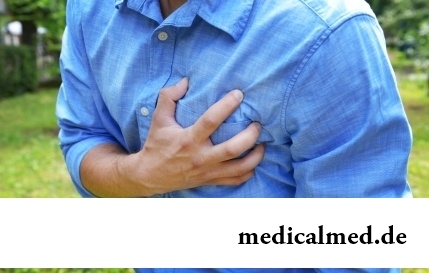
For the time being the perspective of heart diseases seems to most of people remote and foggy. But sooner or later practically each adult faces extremely unpleasant feelings: sudden stethalgia. To be consoled at this time in a thought of what for a heart attack still early, will hardly turn out: if the person is impressionable, he, as a rule, has feeling of panic and fear of fast death. And meanwhile, it is very often possible to confuse pains with cardiac pains невралгическог...
Section: Articles about health
Modern footwear is extremely various. It stopped being only protection for legs long ago. Today shoes, boots, barefoot persons in...
Section: Articles about health
The state of health of the person depends on many factors. One of the most important is the constant, but not exhausting a physical activity. In the presence of various illnesses specialists often advise patients to do swimming which by right borrows ведущ...
Section: Articles about health
All the known slogan "Protect Men!" arose not from scratch. In a sense, the nature created men much less adapted for vital disorders, than it seems at first sight. Statistically, men are ill more often, than women, have the majority of illnesses heavier and earlier die. The situation is aggravated with the fact that our fathers, husbands, brothers and sons are not always inclined to care for the health. Partly it happens because of unwillingness of t...
Section: Articles about health
Nightmares belong to the most unpleasant frustration. Statistically, they happen at 4% of adults, and almost at 70% of children and...
Section: Articles about health
There comes the season of issues. Many Russians already dream of outdoor recreation, trips, beautiful seaside beaches. At this time there is no wish to think of problems with health and other unpleasant things, however there are subjects which require attention. Summer...
Section: Articles about health
The sclera and mucous membrane of an eye are intensively supplied with blood vessels which problem - to saturate nervous tissues of body with nutrients and oxygen. In a normality vessels are almost not noticeable, however at their expansion (owing to thinning of walls) become visible, painting a sclera in red color. Quite often red eyes - the signal of any trouble in an organism caused as external irritants, allergens, and diseases which need in about...
Section: Articles about health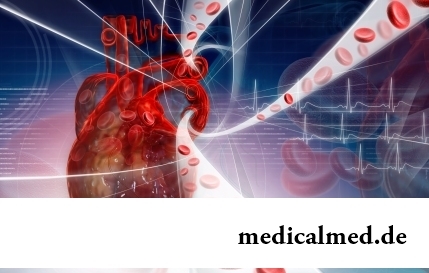
The state of health of the person in many respects depends on chemical composition of biological liquids of an organism. Specialists consider that з...
Section: Articles about health
Each woman has preferences in the field of use of those goods which help us to look good, feel young and effective. Besides: selection process of favourite perfume, shampoo or decorative cosmetics already lifts a spirit...
Section: Articles about health
Weakness of an ankle joint – very widespread problem. Its existence is demonstrated by tendency to a podvorachivaniye of legs when walking on heels, frequent painful sprains, pain on average and anonymous toes even after small loadings. Usually people with such pathology take off unpleasant effects by means of the anesthetizing pulverizing and ointments, but it does not lead to radical elimination of a problem. Meanwhile, at the known persistence it is possible to strengthen an ankle to the house...
Section: Articles about health
Cystitis, or inflammation of a mucous membrane of a bladder, this very widespread disease, which, owing to some persons...
Section: Articles about health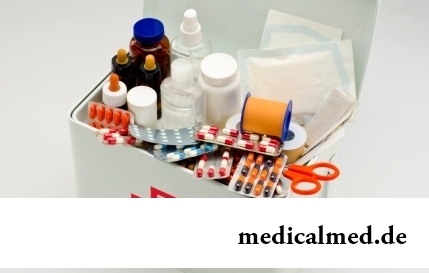
All know that self-treatment is dangerous. However absolutely it is almost impossible to do without it. Rate of modern life does not allow to handle each small trouble to the doctor and information on ways of independent rendering medical the help...
Section: Articles about health
Olive oil – the product capable to make a powerful contribution to health of the person if it includes it in the diet. The rich vitamin composition of oil does it by a product number one from many diseases including from deadly. Only two tablespoons of oil from olives in day prevent emergence of diseases of vessels and heart, cancer, problems with digestion, presenilation, a depression and many other illnesses which treatment would demand a lot of time and forces. Let's consider on...
Section: Articles about health
The pancreas performs two functions in a human body: release of enzymes without which digestion carbohydrate is impossible...
Section: Articles about health
From sexual contacts each person can test insufficiently strongly expressed sexual desire or lack of satisfaction from time to time. However when it happens regularly, it is an occasion to think about health. Most of people does not hurry an obrashcha...
Section: Articles about health
On the head of the person about one million hair follicles, or as they are called still, hair bulbs are located. At the time of the birth most of them is in the "sleeping" state, but within several weeks follicles become more active, and from them hair begin to grow. Intensity of this process is individual, and during life it can change. Genetic predisposition, a physical and emotional state, aggressive influence affects the growth rate of hair out of...
Section: Articles about health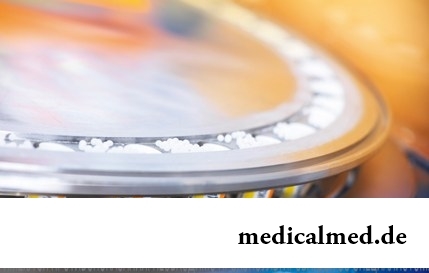
For the help to doctors in the choice of optimal solutions for treatment of various diseases the Cochrane scientific organization (Cochrane) will see off совм...
Section: Articles about health
Cold – a state known to everyone which is followed by cold, cough, high temperature, a pharyngalgia. Often the first that we begin to do in hope again to become healthy – to accept medicines which are not always harmless, then...
Section: Articles about health
Wood louse – the ordinary-looking unpretentious plant extended in all territory of our country. It quickly expands, and sometimes fills sites, bringing a lot of chagrin to gardeners. Perhaps, they would be upset less if knew that the wood louse is valuable medicinal raw materials. A, C and E vitamins, organic acids, tannins, wax, saponins, lipids, mineral salts and essential oils are its part....
Section: Articles about health
Urogenital candidiasis (milkwoman) – a fungal infection which annoys unpleasant feelings in the field of generative organs, сопр...
Section: Articles about health
Dark circles (bruises) under eyes – a shortcoming with most of which often fight against the help of cosmetics (proofreaders, saloon procedures and so forth), eliminating only its visibility. However, according to doctors, skin around eyes – the indicator of many disturbances in an organism...
Section: Articles about health
A little more than a century ago goat milk was a traditional food stuff of most of Russians. Unfortunately, today on tables of our compatriots it appears extremely seldom. The reason that the use of so useful product practically came to naught, not only in very modest volumes of its production and, respectively, rather high cost. Potential consumers are just insufficiently informed on unique properties of goat milk and that advantage which...
Section: Articles about health
White teeth and the Hollywood smile – a dream of many people. Long time was considered that a plaque on teeth and change of their color – destiny of those...
Section: Articles about health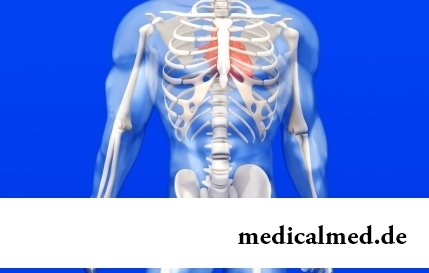
For many women the word "fat" sounds as a sentence. In aspiration to an ideal figure they try to exclude, first of all, from the menu all dishes containing fats without having at the same time a clear idea of a role of these substances in exchange processes, and about an afterbirth...
Section: Articles about health
Within several decades of our compatriots convinced that the use of butter nasty affects a condition of coronary vessels. As a result the reputation of a product was impaired thoroughly a little, and many almost ceased to include it in the diet, having given preference "to safer" to vegetable fats. Meanwhile, the last researches showed that harm of butter for health is strongly exaggerated. But the product has a number of unique properties, to...
Section: Articles about health
